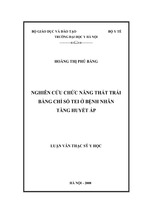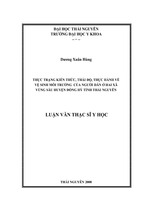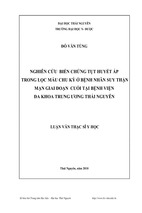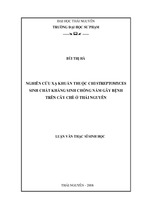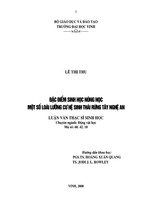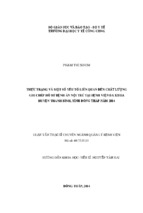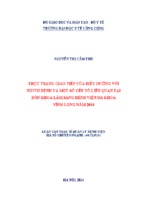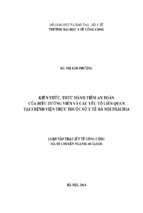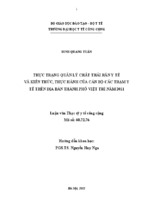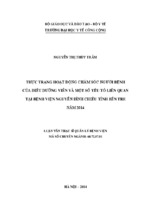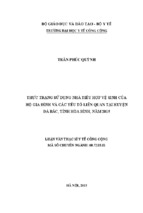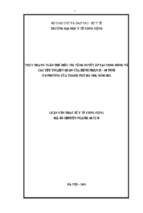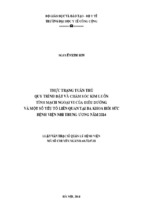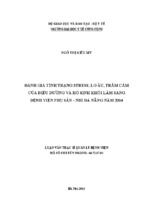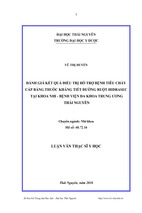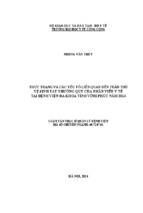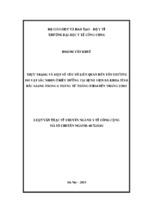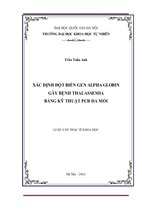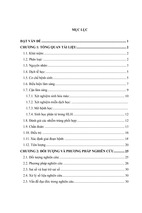CONTEMPORARY WORKING CAPITAL
PRACTICES IN AUSTRALIA
By
YILANG ZHAO
This thesis is submitted in fulfilment of the requirements for the
degree of
Doctor of Philosophy
School of Economics, Finance and Marketing
RMIT University
March 2011
DECLARATION
I certify that, except where due acknowledgement has been made, the work is that of
the author alone; the work has not been submitted previously, in whole or in part, to
qualify for any other academic award; the content of the thesis is the result of work
that has been carried out since the official commencement date of the approved
research programme; any editorial work, paid or unpaid, carried out by a third party is
acknowledged; and ethics procedures and guidelines have been followed.
Signed:
Yilang Zhao
i
ACKNOWLEDGEMENTS
The completion of this thesis would not have been possible without the help and
support of God, my family, the academic, library, and computer laboratory staff of the
Royal Melbourne Institute of Technology, my friends, and all those who have directly
and indirectly contributed to this work.
Dr Vikash Ramiah has been the most open-minded senior supervisor I have ever
encountered. I am very thankful for his guidance, expertise, and support through all
these years. I would like to express my sincere thanks to my second supervisor,
Professor Tony Naughton, for his research expertise and positive and constructive
feedback. It is important to extend my gratitude to Professor Richard Heaney, Dr
Aston De Silva, and Professor Tim Fry for their valuable comments on my thesis. I
would also thank Alicia Brewer and Joelma Nascimento for their editing assistance.
This research would not have been possible without the support of the Melbourne
Centre for Financial Studies, the Finance and Treasury Association, and the
practitioners who participated in this research. Furthermore, I would like to recognize
the financial assistance of a Research and Training Scheme research scholarship.
Finally, and most importantly, I would like to thank my parents and my wife Xiaoming
for their support and love through all these years.
ii
TABLE of CONTENTS
DECLARATION ......................................................................................................................................... i
ACKNOWLEDGEMENTS ......................................................................................................................... ii
TABLE of CONTENTS ..............................................................................................................................iii
LIST of TABLES ....................................................................................................................................... vi
LIST of FIGURES ................................................................................................................................... viii
ABSTRACT ............................................................................................................................................... 1
CHAPTER 1: INTRODUCTION ................................................................................................................ 2
1.1 Background ............................................................................................................................... 2
1.2 Motivation and Research Questions .......................................................................................... 2
1.3 Approach and Methodology ....................................................................................................... 4
1.4 Thesis Contributions .................................................................................................................. 4
1.5 Thesis Structure ........................................................................................................................ 6
CHAPTER 2: LITERATURE REVIEW....................................................................................................... 8
2.1 Introduction ................................................................................................................................ 8
2.2 Working Capital Management ................................................................................................... 9
2.2.1 Risk Management ................................................................................................................... 9
2.2.2 Innovative Aspects of Working Capital Management in Australia ......................................... 11
2.3 Cash Management .................................................................................................................. 19
2.4 Inventory Management ............................................................................................................ 21
2.5 Accounts Receivable Management ......................................................................................... 22
2.6 Debt Management ................................................................................................................... 23
2.7 Behavioural Bias...................................................................................................................... 24
2.8 Education ................................................................................................................................ 28
2.9 Foreign Sales .......................................................................................................................... 29
2.10 Industry Factors ..................................................................................................................... 29
2.11 Gender .................................................................................................................................. 29
2.12 Size ....................................................................................................................................... 30
2.13 Company Performance .......................................................................................................... 30
2.14 Age ........................................................................................................................................ 31
2.15 Credit Ratings ........................................................................................................................ 31
2.16 Listing .................................................................................................................................... 32
2.17 The GFC ................................................................................................................................ 32
2.18 Conclusion ............................................................................................................................. 34
CHAPTER 3: METHODOLOGY .............................................................................................................. 36
3.1 Introduction .............................................................................................................................. 36
3.2 Research Objectives ............................................................................................................... 37
3.3 Research Method .................................................................................................................... 39
3.3.1 Meeting with Practitioners .................................................................................................... 40
FTA................................................................................................................................................ 40
iii
FTA conference ............................................................................................................................. 40
Interviews ...................................................................................................................................... 43
Ethics approval .............................................................................................................................. 44
3.3.2 Designing the Survey Questionnaire .................................................................................... 45
3.3.3 Question Design ................................................................................................................... 46
3.3.5 Pilot Test............................................................................................................................... 55
3.3.6 The Questionnaire ................................................................................................................ 56
3.3.7 Sample Selection.................................................................................................................. 57
3.3.8 Delivery and Response ........................................................................................................ 58
3.3.9 Data Confidentiality .............................................................................................................. 59
3.3.10 Data Security ...................................................................................................................... 59
3.4 Data analysis ........................................................................................................................... 60
3.4.1 Confidence Interval (CI) ........................................................................................................ 61
3.4.2 Ordinal Regression Model: The Robustness Test ................................................................ 63
3.4.3 Data Mining Problem ............................................................................................................ 64
3.5 Conclusion ............................................................................................................................... 64
CHAPTER 4: WORKING CAPITAL MANAGEMENT .............................................................................. 81
4.1 Introduction .............................................................................................................................. 81
4.2 Working Capital Management ................................................................................................. 82
4.3 Cash Management .................................................................................................................. 96
4.4 Inventory Management .......................................................................................................... 108
4.5 Accounts Receivable Management ....................................................................................... 113
4.6 Debt Management ................................................................................................................. 116
4.7 Risk Management.................................................................................................................. 124
4.8 Conclusion ............................................................................................................................. 127
CHAPTER 5: FUNDAMENTAL ANALYSIS OF WORKING CAPITAL MANAGEMENT ........................ 128
5.1 Introduction ............................................................................................................................ 128
5.2 Size ....................................................................................................................................... 128
5.3 Credit Rating.......................................................................................................................... 131
5.4 Foreign Sales ........................................................................................................................ 132
5.5 Listing .................................................................................................................................... 133
5.6 Firm Performance .................................................................................................................. 134
5.7 Gender .................................................................................................................................. 135
5.8 Age ........................................................................................................................................ 136
5.9 Education .............................................................................................................................. 136
5.10 Industry ................................................................................................................................ 137
5.11 Conclusion ........................................................................................................................... 140
CHAPTER 6: BEHAVIOURAL ASPECTS OF WORKING CAPITAL MANAGERS ............................... 171
6.1 Introduction ............................................................................................................................ 171
6.2 Self-Serving Bias ................................................................................................................... 172
6.3 Overconfidence Bias ............................................................................................................. 174
6.4 Loss Aversion Bias ................................................................................................................ 175
6.5 Anchoring and Representativeness Bias ............................................................................... 177
6.6 Profiling a Good Corporate Treasurer ................................................................................... 179
iv
6.7 Conclusion ............................................................................................................................. 181
CHAPTER 7: The GLOBAL FINANCIAL CRISIS AND WORKING CAPITAL MANAGEMENT ............ 195
7.1 Introduction ............................................................................................................................ 195
7.2 Impact of the GFC on Working Capital Management ............................................................ 196
7.3 Impact of the GFC on Cash Management ............................................................................. 196
7.4 Impact of the GFC on Inventory Management ....................................................................... 197
7.5 Impact of the GFC on Accounts Receivable Management .................................................... 197
7.6 Impact of the GFC on Debt Management .............................................................................. 198
7.7 Conclusion ............................................................................................................................. 198
CHAPTER 8: ROBUSTNESS TEST ..................................................................................................... 200
8.1 Introduction ............................................................................................................................ 200
8.2 Methodology .......................................................................................................................... 200
8.3 Results .................................................................................................................................. 201
8.4 Conclusion ............................................................................................................................. 202
CHAPTER 9: CONCLUSION ................................................................................................................ 229
9.1 Overview ............................................................................................................................... 229
9.2 Thesis Summary.................................................................................................................... 230
9.3 Key Contributions of Thesis ................................................................................................... 232
9.3.1 Contributions to General Working Capital Management ..................................................... 233
9.3.2 Contributions to a Fundamental Analysis of Working Capital Management ....................... 234
9.3.3 Contributions to a Behavioural Analysis of Working Capital Management ......................... 234
9.3.4 Contributions to the Impact of the GFC on Working Capital Management ......................... 235
9.4 Limitations of the Study and Directions for Future Research ................................................. 235
REFERENCES ..................................................................................................................................... 236
v
LIST of TABLES
Table 3.1 Draft Questionnaire (see Table 3.7 for the final questionnaire) ............................................... 65
Table 3.2 Interview Cover Letter ............................................................................................................. 70
Table 3.3 Plain Language Statement (PLS) for Interview ....................................................................... 71
Table 3.4 Interview Consent Form .......................................................................................................... 73
Table 3.5 Questionnaire Cover Sheet ..................................................................................................... 75
Table 3.6 Plain Language Statement for Questionnaire ......................................................................... 76
Table 3.7 Survey Questionnaire .............................................................................................................. 78
Table 4.1 Working Capital Practices in Australian Firms ......................................................................... 86
Table 4.2 Key Value Metrics in Australian Firms ..................................................................................... 91
Table 4.3 Working Capital Management Methods in Australian Firms .................................................... 95
Table 4.4 Methods for Cash Management in Australian Firms .............................................................. 103
Table 4.5 Factors Perceived to Be Important for Cash Management .................................................... 107
Table 4.6 Inventory Management Approaches in Australian Firms ........................................................ 112
Table 4.7 Motivations for Australian Firms to Use Accounts Receivable Rather than Cash .................. 115
Table 4.8 Factors Perceived to Be Important for Debt Management in Australian Firms ...................... 120
Table 4.9 Preferred Sources of Funding ............................................................................................. 123
Table 4.10 The Importance of Risk Management During the GFC ........................................................ 126
Table 5.1 Fundamental Factors Affecting Working Capital Management .............................................. 141
Table 5.2 Fundamental Factors Affecting Key Value Metrics in Working Capital Management ............. 144
Table 5.3 Fundamental Factors Affecting Working Capital Management Approaches .......................... 147
Table 5.4 Fundamental Factors Affecting Cash Management ............................................................... 150
Table 5.5 Importance of Factors Affecting Cash Management with Firm Characteristics ...................... 153
Table 5.6 Fundamental Factors Affecting Inventory Management......................................................... 156
Table 5.7 Fundamental Factors Affecting Motivations of Accounts Receivable Management ............... 159
Table 5.8 Fundamental Factors Affecting Debt Management ................................................................ 162
Table 5.9 Fundamental Factors Affecting Funding Method Preferences ............................................... 165
Table 5.10 Fundamental Factors Affecting the Importance of Risk Factors........................................... 168
Table 6.1 Behavioural Biases Affecting Working Capital Management ................................................. 182
Table 6.2 Behavioural Biases Affecting Key Value Metrics .................................................................... 183
Table 6.3 Behavioural Biases Affecting Working Capital Management Methods................................... 184
Table 6.4 Behavioural Biases Affecting Cash Management .................................................................. 185
Table 6.5 Importance of Factors Affecting Cash Management with Behavioural Biases ....................... 187
Table 6.6 Behavioural Biases Affecting Inventory Management ............................................................ 189
Table 6.7 Behavioural Biases Affecting Inventory Management ............................................................ 190
Table 6.8 Behavioural Biases Affecting Debt Management ................................................................... 191
Table 6.9 Behavioural Biases Affecting Preference Source of Funding................................................. 193
Table 6.10 Behavioural Biases Affecting Risk Management ................................................................. 194
Table 8.1 Robustness Test for Factors Affecting Working Capital Management Approaches................ 203
Table 8.2 Robustness Test for Factors Affecting Key Value Metrics ...................................................... 205
vi
Table 8.3 Robustness Test for Factors Affecting Working Capital Management Methods ..................... 207
Table8.4 Robustness Test for Factors Affecting Cash Management ..................................................... 209
Table 8.5 Robustness Test for Factors Affecting Cash Decisions.......................................................... 213
Table 8.6 Robustness Test for Factors Affecting Inventory Management .............................................. 217
Table 8.7 Robustness Test for Factors Affecting Trade Credit ............................................................... 219
Table 8.8 Robustness Test for Factors Affecting Debt Policies ............................................................. 221
Table 8.9 Robustness Test for Factors Affecting Funding Preference ................................................... 225
Table 8.10 Robustness Test for Factors Affecting Risk Management.................................................... 227
Table 9.1 Different Working Capital Tools Tested and the Proportions of Respondents ........................ 231
vii
LIST of FIGURES
Fig. 2.1 A simplified company structure chart. ......................................................................................... 12
Fig. 2.2 Key performance indicators for accounts receivable................................ .................................. 12
Fig. 2.3 Working capital level chart.......................................................................................................... 13
Fig. 3.1 Fundamental factors that can affect working capital management. ............................................ 38
Fig. 3.2 Various behavioural biases that can affect working capital management. .................................. 39
Fig. 3.3 Self-serving bias question design............................................................................................... 51
Fig. 3.4 Overconfidence bias question design……… .............................................................................. 52
Fig. 3.5 Anchoring bias question design……… ....................................................................................... 53
Fig. 3.6 Loss aversion bias question design.............................................................. .............................. 54
Fig. 3.7 The response rates of the mail survey and online questionnaire................................................ 58
Fig. 3.8 An example of a CI........................... .......................................................................................... 61
Fig. 4.1 Working capital practices in Australian firms. ............................................................................. 85
Fig. 4.2 Key value metrics in Australian firms.......................................................................................... 90
Fig. 4.3 Methods for working capital management in Australian firms..................................................... 94
Fig. 4.31 A simple example of the netting system. .................................................................................. 99
Fig. 4.4 Cash management methods in Australian firms. ...................................................................... 102
Fig. 4.5 Factors perceived to be important for cash management. ....................................................... 106
Fig. 4.6 Inventory management approaches in Australia. ..................................................................... 111
Fig. 4.7 Motivations for Australian firms to use accounts receivable rather than cash. ......................... 114
Fig. 4.8 Factors perceived to be important for debt management in Australian firms. ........................... 119
Fig. 4.9 Preferred sources of funding..................................................... ............................................... 122
Fig. 4.10 Importance of risk management during the GFC period. ....................................................... 125
Fig. 6.1 Identification of the self-serving bias. ....................................................................................... 173
Fig. 6.2 Identification of the overconfidence bias. ................................................................................. 175
Fig. 6.3 Loss aversion bias: gains and losses as a percentage of sales revenue. ................................ 176
Fig. 6.4 Identification of the anchoring bias. .......................................................................................... 178
Fig. 6.5 Profile of a good corporate treasurer. ....................................................................................... 180
Fig. 7.1 Cash levels during the GFC...................................................................................................... 197
viii
ABSTRACT
Corporate finance focuses on investment and financing decisions. Within this
framework, however, the finance literature has given little consideration to working
capital management. Similarly, in practice, working capital managers are regarded as
passive contributors to major business decisions. This thesis attempts to increase
academic awareness of the importance of working capital management. When we
combine the existing literature with recent events, such as industrial technological
advances, changes in Australian accounting standards, and the global financial crisis,
a fertile research ground is evident and allows us to explore current practices in
working capital management. Data are collected through interviews with 10 corporate
treasurers and a survey of 120 Australian corporations to document the approaches
used by working capital managers in the areas of cash, inventory, accounts
receivable, accounts payable, and risk management. This thesis reports how
fundamental factors such as firm size, company performance, credit ratings, industry,
and education, gender, and age of the working capital manager play a vital role in the
management of these areas. This paper’s major contribution lies in its examination of
the behavioural aspects of working capital managers. We show that Australian
managers are prone towards behavioural biases such as loss aversion,
overconfidence, anchoring, and self-serving biases, and that some of these can be
desirable for efficiency. Taking into account all of these factors, we propose a profile
of a good working capital manager.
1
CHAPTER 1
INTRODUCTION
1.1 Background
Corporate finance can be subcategorized into long-term and short-term finance.
Capital budgeting, dividend policy, and capital structure fall under long-term finance.
Short-term finance, on the other hand, focuses on how working capital affects a firm
within a period of one year. Working capital is defined as current assets minus current
liabilities and indicates a firm’s potential liquidity position. Working capital
management includes cash management, inventory management, accounts
receivable management, and accounts payable management. In Australia, working
capital management generally falls under the responsibility of corporate treasurers.
The greater the working capital, the less financial strain a company experiences, but
too much working capital suggests idle assets and excess liquidity.
1.2 Motivation and Research Questions
The management and control of working capital is one of the most effective measures
of a company’s financial health. It is common to assume that a firm’s objective is to
maximize shareholder value, and effective working capital management can
contribute substantially towards this goal. Efficient working capital management can
foresee and sometimes avoid potential financial difficulties. Poor working capital
management can lead to financial distress, which increases the probability of
bankruptcy. Smith (1973) argues that a large number of business failures have been
due to improper working capital management. Berryman (1983) and Dunn and
Cheatham (1993) also state that improper working capital management is the primary
reason for small business failures in the UK and the USA. When firms are either in
-2-
distress or approaching bankruptcy, working capital management is of interest to
banks and legal advisers. Banks rely on working capital figures to decide whether to
offer additional loans to corporations, and legal advisers require these values to
confirm that a firm is legally bankrupt. Although working capital management is
important to corporate treasurers, shareholders, loan providers, and legal advisers, it
has been overlooked by academics. The primary goal of this thesis is to document the
contemporary practices of working capital managers.
Belt and Smith (1991) surveyed working capital managers in Australia in 1989 and
documented working capital practices in the 1980s. Since then, the Australian market
has undergone numerous structural changes, namely, rapid advances in computer
technology for inventory control, alignment of the Australian accounting standards to
global accounting standards, and a variety of market-related influences (including
technological advances and changes in spending patterns and trade) and
government-related influences (such as reforms to infrastructure services and labour
market regulations). Further market disruptions, such as heightened global security
issues, energy concerns, and the global financial crisis (GFC), have potentially impact
working capital management. Using survey methodology, this thesis documents the
latest developments in the field and assesses structural changes in working capital
management.
Although Belt and Smith (1991) consider the fundamental characteristics of working
capital management, they ignore the behavioural aspects of working capital
managers. Kahneman, Slovic, and Tversky (1982) postulate that professionals are
prone to various heuristic-driven biases, such as representativeness, loss aversion,
and anchoring biases. While behavioural finance scientists study how these biases
affect financial practitioners, this research explores how they specifically affect the
decisions of working capital managers and develops a profile for these managers.
-3-
Furthermore, from both an academic and a practical perspective it is still unclear that
how working capital management changes with respect to the GFC in Australia, and
this research is going to examine it.
1.3 Approach and Methodology
Many techniques are available to answer the research questions identified in the
previous section, but we choose a survey methodology because it can address all of
the issues mentioned above. Prior to designing the survey questionnaires, we
conducted interviews with working capital managers to assess recent developments
in the field. The first version of the questionnaire was then pilot-tested on experienced
people in the field. The final questionnaire was sent by mail to all listed firms in
Australia, and an online questionnaire was also made available. We used statistical
techniques to evaluate the data collected and an ordinal regression econometrics
model was used as a robustness test. It should be noted that the same methodology
applies to all the empirical chapters.
1.4 Thesis Contributions
Overall, this research intends to make the following contributions in the empirical
chapters. Chapter 4 empirically tests the different determinants of working capital
management in Australia. In particular, it describes and analyses the determinants of
a range of methods utilized in working capital management. Following the structure of
the questionnaire, Chapter 4 initially examines the overall performance (approaches,
key value metrics, and methods) of general working capital management in Australia
and then focuses on the performance of each determinant separately. It has been
noticed that short-term debt is not similar in nature to long-term debt; however, a
number of factors that could affect both long-term and short term debt decisions are
tested. A major contribution of this research is this chapter’s test of the importance of
risk management in working capital management. Other research questions are also
empirically addressed in this chapter, such as the importance of factors affecting cash
-4-
and debt decisions, whether pecking order and/or trade-off theory hold in debt
management in Australia, and whether Australian corporate treasurers prefer to use
accounts receivable rather than cash.
Chapter 5 examines the fundamental factors affecting working capital management.
Inspired by the work of Graham and Harvey (2001) on how fundamental
characteristics affect a segment of working capital, this chapter explores how
fundamental factors such as size, credit rating, foreign sales, listing, firm performance,
industry, and chief executive officer and chief financial officer age, gender, and
education affect all the different components of working capital. Survey respondents
in this thesis are subcategorized based on these characteristics, and their
performance compared with other groups. For instance, for all the factors cited above,
we test whether small firms have the same working capital structure as large firms.
The additional fundamental factors tested in Chapter 5 extend the analysis.
Proponents of the growing field of behavioural finance argue that behavioural biases
affect managerial decisions, and it is increasingly recognized that behavioural science
is important to our understanding of economic decision making (Kahneman and
Tversky, 1979). Since no prior study has studied behavioural biases in the context of
the decision making of working capital managers, Chapter 6 fills a major gap in the
literature by exploring how behavioural factors affect working capital management.
This chapter first investigates whether Australian corporate treasurers (also known as
working capital managers) are prone towards any behavioural biases such as the
self-serving, overconfidence, loss aversion, or anchoring bias. It then tests how each
behavioural bias affects working capital management. Using a similar methodology as
in Chapter 5, participants are divided into two groups: those with a particular bias and
those without. The performance difference between these two subsamples is then
discussed. This chapter attempts to develop a profile of a good working capital
manager.
-5-
Given that the survey was carried out in the middle of the GFC, the question remains
as to how working capital managers behaved during that period. The timing of the
survey allows us to capture this particular event, another unique contribution of this
thesis. Chapter 7 investigates the impacts of the GFC on working capital management.
Participants were asked to answer a number of open-ended questions on their
reactions during this difficult time. By summarizing the answers, this chapter
contributes to the literature by pointing out specific policy changes to working capital
management. First, it investigates managerial changes to overall working capital
management, and then specific segments such as cash, inventory, accounts
receivable, debt, and risk management.
So far, the examination on fundamental factors and behavioural factors that affecting
working capital decisions in Chapter 5 and 6 assume that all factors are independent
of each other. Chapter 8 applies an ordinal regression model to test for the joint
impacts of these factors. Selected factors namely, the self-serving bias,
overconfidence bias, loss aversion bias, anchoring bias, size, foreign sales, listing,
industry, and age of corporate treasurers are examined. It also shows the severity of
these violations, specifically, anything changes from the previous analysis and the
magnitude of the changes.
1.5 Thesis Structure
The remainder of this thesis is structured as follows. Chapter 2 reviews the literature.
Chapter 3 discusses the research methodology. Chapters 4, 5, and 6 provide
empirical evidence of working capital management practice, fundamental factors
affecting working capital management, and behavioural factors affecting working
capital decisions, respectively. Chapter 7 explores the GFC’s impact on working
capital management. Chapter 8 applies the robustness test to examine the joint
impact of factors that affecting working capital management. Chapter 9 concludes the
thesis by summarizing the major findings of the empirical analysis. It emphasizes the
-6-
key contributions of this research and provides a robustness test to validate the
empirical findings. Finally, it proposes possible opportunities for future research.
-7-
CHAPTER 2
LITERATURE REVIEW
2.1 Introduction
This chapter reviews the applicable literature, which consists of studies on four topics,
namely, working capital management, fundamental characteristics, behavioural
finance theory, and the global financial crisis (GFC). In addition, it discusses new
developments in the working capital management area not previously documented.
The first major section of this chapter presents the current consensus and debate in
working capital management, including the areas of cash, inventory, accounts
receivable, and debt. It then examines current practice for each of these aspects.
Furthermore, the literature on risk management is explored. The next major section of
Chapter 2 examines the effects of various fundamental characteristics, that is, size,
credit rating, foreign sales, firm performance, industry, and gender, age, and
education of the working capital manager, and behavioural biases, namely, the
self-serving, overconfidence, loss aversion, and anchoring biases. Lastly, the
background and impacts of the GFC are reviewed. This chapter’s discussion of the
literature leads to a number of research questions.
As discussed in Chapter 1, there is not a great volume of academic literature
specifically related to working capital management or the new related issues explored
in this thesis. The sparse literature that does exist motivates this study. Specific
issues found to be lacking in the literature are supplemented and informed by data
gathered from the preliminary face-to-face interviews with Australian corporate
treasurers.
-8-
2.2 Working Capital Management
Gentry, Mehta, Bhattacharyya, Cobbaut, and Scaringella (1979) study the
management perceptions of the working capital processes of large corporations in
Belgium, France, India, and the USA. The majority of the respondents in the study of
Gentry et al. (1979) indicate that the most important short-run objective is to provide
the cash, receivables, inventory, and short-term credit necessary to support
anticipated sales in the defined planning period. Khoury, Smith, and MacKay (1999)
compare working capital practices in Canada, the USA, and Australia and observe
both similarities and differences in working capital practices across countries and time.
The authors state that future research is warranted in this area, particularly to
determine how these practices change over time. In a quantitative regression analysis,
Chiou, Cheng, and Wu (2006) show that only the debt ratio and operating cash flow
influence working capital management. In other words, contrary to Gentry et al. (1979),
the authors find no statistical significance for inventory and accounts receivable as
determinants of working capital. This study attempts to contribute to the academic
debate as to what the determinants of working capital are.
In the last two decades, risk management has become an important element of
conducting business, and it is generally the role of corporate treasurers to manage
risk as well. This finding was determined during the early stages of this study involving
interviews with corporate treasurers, as well as Ernst & Young surveys. While the
current academic literature does not mention risk management as a component of
working capital management, related risk studies are considered in the next section.
2.2.1 Risk Management
Ernst & Young conducts yearly surveys of corporate treasurers on financial risk
management in Australia and New Zealand. The results of their surveys show that the
importance of different financial risks varies over time. Graham and Harvey (2001)
-9-
also examine risk management practices and find that they are a key determinant of
cash flow, discount rate, and debt. Recently, Smith and Thompson (2007) have
shown the importance of credit risk management in debt management. Moosa (2007)
and Abrams, Kanel, Muller, Pfitzmann, and Taylor (2007) highlight the operational
risks of businesses due to factors such as incompetent staff, fraud, inefficient
processes, and external factors. Liebesman (2008) hypothesizes that the adoption of
ISO 9001 contributes to risk management and that this enhances various areas such
as customer satisfaction, supply chain, revenue recognition, information security,
logistics, and natural disaster management. Verschoor and Muller (2007) and
Kalamkar (2007), on the other hand, explain the importance of market risk in the
day-to-day running of a business.
In the context of equity markets, liquidity risk has been well documented. Black (1971)
outlines four major types of liquidity, namely, transaction speed, the tightness of the
spread, and the resiliency and depth of the market. Others, such as Zheng and Shen
(2008), simply define liquidity risk as the inability to buy and sell securities. Holmstrom
and Tirole (2000) show that risk associated with liquidity management has price,
quantity, and reputation effects. Naimy (2009) and, more recently, Van den End (2010)
review bank liquidity risk and argue that inefficient liquidity risk management was a
key determinant of the recent financial crisis. The authors also argue in favour of
effective policies and measures that will strengthen the banking system and enhance
financial stability.
Simon (1984) and Howell and Chaddick (1994) argue that firm operations can be
directly or indirectly affected by political risk. Van Wyk (2010) proposes an
interdisciplinary framework that helps managers identify and track political risks and
thus prevent any adverse impact on firm profitability. From this literature review, it is
clear that liquidity risk, market risk, credit risk, operational risk, and political risk are
important aspects of risk management. The surveys conducted by Ernst & Young
show the relative importance of these risks under normal market conditions, and this
- 10 -
research examines the importance of managing these risks during the GFC.
Furthermore, this study attempts to demonstrate that risk management is the fifth arm
of working capital management.
2.2.2 Innovative Aspects of Working Capital Management in Australia
The last survey on working capital practices in Australia was conducted in 1989 (Belt
and Smith, 1991) and determined that the practices of working capital managers are
limited to cash, inventory, accounts receivable, and accounts payable. However, over
the last two decades, the role of these managers has changed considerably, an
aspect not covered in the academic literature. It is thus important to align the current
literature with current market practices. This study touches on the new approaches,
the metrics used by practitioners, and the new techniques. It is important to note that
we compare these concepts with the work of Belt and Smith (1991) to classify them as
new elements.
2.2.2.1 New Approaches in Working Capital Management
2.2.2.1.1 Emphasizing the importance of working capital within the organization
Traditionally, the role of working capital managers has been a passive one. For
instance, in managerial meetings, managers discuss matters that are in alignment
with the core objectives of the business and give less consideration to the issues
faced by working capital managers. During the interview stage of this study, working
capital managers reported their struggles to have their contribution recognized as vital
to the day-to-day running of business in Australia. The survey in this thesis tests if
Australian firms emphasize the importance of working capital management.
2.2.2.1.2 Putting in place structure, governance, and dedicated resources
To increase the efficiency of working capital management, a company can put in
place an organizational structure that empowers people and facilitates workflow. For
example, Figure 2.1 shows a typical organizational structure for a large company. As
shown, the top management position in the company is that of the chief executive
- 11 -
- Xem thêm -

